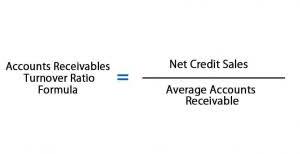
In addition, under paragraph (g)(1)(ii) of this section, USS must recognize its realized gain that would not otherwise be recognized with respect to the 60-percent FT block. USS’s fair market value and adjusted basis in the 60-percent FT block are $60x (60 percent of the $100x fair market value of the stock of FT) and $12x (60 percent of the $20x adjusted basis of the stock of FT), respectively. USS’s initial built-in gain with respect to the 60-percent FT block is accordingly $48x ($60x fair market value less $12x adjusted basis). The $30x deemed dividend increases USS’s basis in the 60-percent FT block to $42 ($12x + $30x), leaving $18x ($60x – $42x) of built-in gain. USS must therefore recognize the remaining $18x of gain with respect to the 60-percent FT block.
Determining Net Cash Flow from Operating Activities (Indirect

Because all of the designated beneficiaries are eligible designated beneficiaries, annual life expectancy payments are permitted under section 401(a)(9)(B)(iii). Note, however, that because §1.401(a)(9)-5(e)(3) applies, a distribution of the remaining interest is required by no later than 10 years after the calendar year in which the oldest of G and G’s siblings dies. The facts are the same as in paragraph (e)(9)(i) of this section (Example 1), except that B becomes disabled in 2023 (after A’s death in 2022). Because B was not disabled as of the date of A’s death, B ceases to be an eligible designated beneficiary upon reaching the age of majority in 2024, and Plan X is required to distribute A’s remaining interest in the plan by the end of 2034 pursuant to the rules of §1.401(a)(9)-5(e)(4). (8) Applicability of definition of eligible designated beneficiary to beneficiary of surviving spouse. In a case to which §1.401(a)(9)-3(e) applies, a designated beneficiary of the employee’s surviving spouse is an eligible designated beneficiary provided that designated beneficiary would be an eligible designated beneficiary described in paragraph (e)(1) of this section if that paragraph were to be applied by substituting the surviving spouse for the employee.
- USP must therefore include $50x in income as a deemed dividend under this section.
- 5 However, if the spouse dies before distributions have begun, then in accordance with section 401(a)(9)(B)(iv)(III), the spouse is treated as the employee for purposes of determining the beneficiary designated under the plan.
- In our example, assume that they do not get paid for this work until the first of the next month.
- To reconcile net income to cash flow from operating activities, subtract increases in current assets.
- Propensity Company had a noncash investing and financingactivity, involving the purchase of land (investing activity) inexchange for a $20,000 note payable (financing activity).
- To calculate retained earnings, combine the net earnings a company has generated from its profit and loss statement.
Cash Flow from Investing Activities
Therefore, for purposes of applying the rules in §1.401(a)(9)-5, the entire interest under Contract S may be determined as the notional account balance (that is, without regard to the additional death benefit). If the employee’s sole beneficiary is the employee’s spouse and the distributions satisfy section 401(a)(9) without regard to the MDIB requirement, the distributions to the employee will be deemed to satisfy the MDIB requirement. Annuity payments must commence on or before the employee’s required beginning date (within the meaning of §1.401(a)(9)-2(b)). The first payment, which must be made on or before the employee’s required beginning date, must be the payment that is required for one payment interval.
Retained earnings appropriations
- When the company provides the printing services for the customer, the customer will not send the company a reminder that revenue has now been earned.
- This paragraph (g) does not apply to an inbound nonrecognition transaction if a transaction described in paragraph (g)(1) of this section was entered into with a principal purpose of subjecting the inbound nonrecognition transaction to this paragraph (g).
- Financing net cash flow includes cash received and cash paidrelating to long-term liabilities and equity.
- Under paragraph (o)(3)(i) of this section, payments made from an annuity contract purchased from an insurance company will not fail to satisfy the nonincreasing payment requirement on account of payment increases that result from actuarial gains (within the meaning of paragraph (o)(5) of this section), if the conditions set forth in paragraphs (o)(3)(i)(A) through (C) of this section are satisfied.
- (C) Application of paragraph (b) of this section and regulations under section 367(a).
- (ii) Power of appointment—(A) Exercise or release of power of appointment by September 30.
The Paperwork Reduction Act of 1995 (44 U.S.C. 3501–3520) generally requires that a Federal agency obtain the approval of the Office of Management and Budget (OMB) before collecting information from the public, whether such collection of information is mandatory, voluntary, or required to obtain or retain a benefit. An agency may not conduct or sponsor, and a person is not required to respond to, a collection of information unless the collection of information displays a valid control number. Section 823 of PPA provides that a governmental plan (as defined in section 414(d) of the Code) is treated as having complied with section 401(a)(9) if the plan complies with a reasonable, good faith interpretation of section 401(a)(9). Another strategy for addressing accumulated loss is to increase revenue.

Classifying Cash Flows—Financing Activities
Similarly, the iPhone maker, whose fiscal year ends in September, had $70.4 billion in retained earnings as of September 2018. Revenue is the money generated by a company during a period but before operating expenses and overhead costs are deducted. In some industries, revenue is called gross sales because the gross figure is calculated before any deductions. The decision to retain earnings or to distribute them among shareholders is usually left to the company management. However, it can be challenged by the shareholders through a majority vote because they are the real owners of the company.

Accumulated losses and retained earnings are two financial terms that refer to the cumulative net profits or losses of a company after dividends have been paid out to shareholders. The main difference between them is the sign, as accumulated losses are used when the balance is negative while retained earnings are used when the balance is positive. Decreases in net cash flow from financing normally occur when(1) long-term liabilities, such as notes payable or bonds payableare repaid, (2) when the company reacquires some of its own stock(treasury stock), or (3) when the company pays dividends toshareholders. In the case of Propensity Company, the decreases incash resulted from notes payable principal repayments and cashdividend payments. Assume that you are the chief financial officer of a companythat provides accounting services to small businesses.
- A loss on the disposal of a non-current asset is added back as an adjustment to net income because, in analyzing the journal entry when losses occur (e.g., debit cash, debit loss, credit land), the loss represents the difference between the cash proceeds and the book value of the non-current asset.
- Pursuant to paragraph (f)(1)(ii)(A) of this section, Trust T is a conduit trust.
- (B) Exception for certain trusts divided upon the death of the employee.
- If the employee dies on or after the employee’s required beginning date, then, in the calendar year of the employee’s death, the amount treated as a required minimum distribution and not eligible to be rolled over is determined in accordance with §1.401(a)(9)-5(c) (or, in the case of a defined benefit plan, §1.401(a)(9)-6).
- There is a period of time after the year-end date when economic events apparent in the new year may need to be either reported in the financial statements for the year just ended or disclosed in the notes prior to their release.
- The Commissioner, in revenue rulings, notices, or other guidance published in the Internal Revenue Bulletin (see §601.601(d) of this chapter), may provide additional guidance on additional benefits that may be disregarded.
Are Companies Making Fewer Errors in Financial Reporting?

Disclosures such as those listed in the classification schedule above may be presented in parentheses beside the line item within the body of the SFP/BS, if the disclosure is not lengthy. Otherwise, the disclosure is to be included in the notes to the financial statements and cross-referenced to the corresponding line item in the SFP/BS. Note that in addition to the measurement basis identified for each asset category in the chart above, many assets’ valuations can be subsequently adjusted, depending on the circumstances. Below are examples of some of the common valuation adjustments made to various asset accounts that will be discussed in later chapters.
How Do Dividends Affect the Balance Sheet?
Like the proposed regulations, these final regulations retain the rules from the 2002 regulations under which the required minimum distribution from one IRA is permitted to be distributed from another IRA in order to satisfy section 401(a)(9), subject to the certain restrictions involving inherited IRAs and Roth IRAs. For the calendar year that includes the tenth anniversary of the date of the employee’s death, the amount required to be distributed to satisfy the applicable enumerated section is the payee’s entire remaining interest in the annuity contract. Because Trust P does not require that distributions from A’s account in Plan X to Trust P, upon receipt by the trustee, be paid directly to (or for the benefit of) B, Trust P is not a conduit trust and accordingly is an accumulation trust (as described in paragraph (f)(1)(ii)(B) the accumulated net amount of revenue less expenses and dividends is reflected in the balance of of this section). Pursuant to paragraph (f)(3)(i)(B) of this section, C, as the residual beneficiary of Trust P, is treated as a beneficiary designated under Plan X (even though access to those amounts is delayed until after B’s death). Pursuant to paragraph (f)(2)(iii)(A) of this section, because Charity Z’s entitlement to amounts in the trust is based on the death of a beneficiary described in paragraph (f)(3)(i)(B) of this section who is not also described in paragraph (f)(3)(i)(A) of this section, Charity Z is disregarded as a beneficiary of A. Under §1.401(a)(9)-5(f)(1), the designated beneficiary used to determine the applicable denominator is the oldest of the designated beneficiaries of Trust P’s interest in Plan X. B is the oldest of the beneficiaries of Trust P’s interest in Plan X (including residual beneficiaries).
- (2) Section 401(a)(9)(H) would apply with respect to the employee under the rules of paragraph (b)(2)(i) of this section.
- Contract Y1 is a single life annuity contract with a 10-year period certain.
- However, the amount rolled over to a Roth IRA generally is not subject to the 10-percent additional income tax under section 72(t).
- Current assets are those assets that are converted into cash within the operating cycle or one year, whichever is longer.
- Companies formally record retained earnings appropriations by transferring amounts from Retained Earnings to accounts such as “Appropriation for Loan Agreement” or “Retained Earnings Appropriated for Plant Expansion”.
- (1) Look-through of trust to determine designated beneficiaries.
In the case of an employee who dies before the required beginning date, if the life expectancy rule in §1.401(a)(9)-3(c)(4) applies, then the first distribution calendar year for the designated beneficiary is the calendar year following the calendar year in which the employee died (or, if applicable, the calendar year described in §1.401(a)(9)-3(d)). See §1.401(a)(9)-3(c)(5) to determine whether the life expectancy rule applies. Pursuant to paragraph (f)(5)(ii)(A) of this section, because G timely restricted the power of appointment so that G may exercise the power to appoint the residual interest in Trust Q only in favor of G’s siblings, the designated beneficiaries are G and G’s siblings.
Revenue, net profit, and retained earnings are terms frequently used on a company’s balance sheet, but it’s important to understand their differences. Retained earnings, at their core, are the portion of a company’s net income that remains after all dividends and distributions to shareholders are paid out. From there, the company’s net income—the “bottom line” of the income statement—is added to the prior period balance. From a more cynical view, even positive growth in a company’s retained earnings balance could be interpreted as the management team struggling to find profitable investments and opportunities worth pursuing. In contrast, if a company has consistently incurred substantial losses at the net income line item (the “bottom line”), its retained earnings balance could eventually become negative, which is recorded as an “accumulated deficit” on the books. The steps to calculate retained earnings on the balance sheet for the current period are as follows.